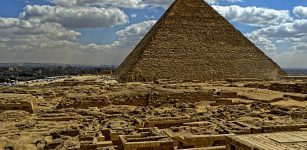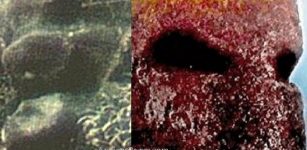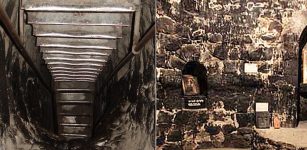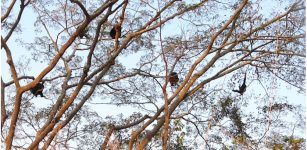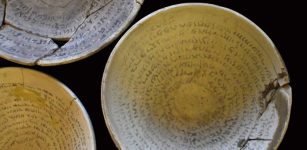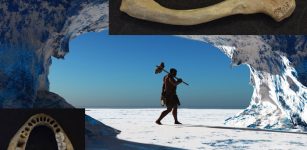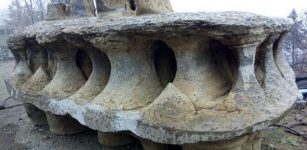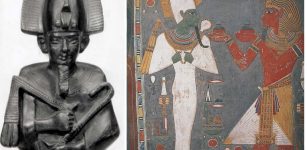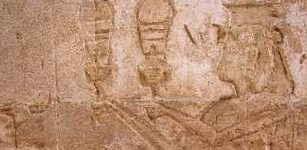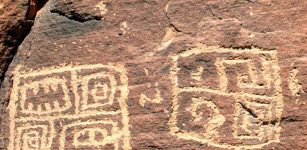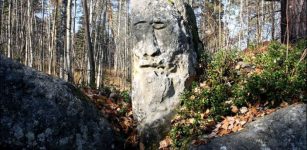Controversial 3D Reconstruction Of 10,000-Year-Old Apiuna Man Reveals First Americans Came From Africa
AncientPages.com - Sophisticated technology can shed new light on many prehistoric mysteries. Despite many theories and speculations, we still don’t know who the first Americans were and where they came.
A controversial 3D reconstruction of Apiuna man who lived 10,000 years ago, suggests first Americans came from Africa.
Apiuna man Resembled Luzia Who Had Negroid Features
Archaeologists discovered the skull of Apiuna man about 50 years ago in a cave in Brazil.
Examination of the skull revealed that the prehistoric man resembled Luzia, a name given to a 11,500-year-old skull of a young African woman, who is believed to have roamed the savannah of south-central Brazil some 11,500 years ago.
What was puzzling about Luzia is that her features appeared to be Negroid rather than Mongoloid. This suggests that the Western Hemisphere may have initially been settled not only earlier than thought, but by a people distinct from the ancestors of today's North and South American Indians.
''We can no longer say that the first colonizers of the Americas came from the north of Asia, as previous models have proposed,'' said Dr. Walter Neves, an anthropologist at the University of Sao Paulo, who made the initial discovery along with an Argentine colleague, Hector Pucciarelli. ''This skeleton is nearly 2,000 years older than any skeleton ever found in the Americas, and it does not look like those of Amerindians or North Asians.''
3D Reconstruction Of Apiuna’s Ancient Skull
Brazilian graphic designer, Cicero Moraes have used sophisticated computer software to reconstruct the face of Apiuna, and the end-results suggests that Apiuna was part of the first wave of people in America who were Africans with Austro-Melanesian characteristics.
The theory that first Americans were originally from Africa is controversial because it goes against the mainstream belief that the American continents' first pioneers were Asian.
Some scientists state that the skull of Apiuna and Luzia appear to confirm a decades old argument that Africans were the first colonizers of the Americas.
See also:
So, how and when did Africans reach America? Archaeologists believe there were at least two large migratory waves of distinctively different people who made the odyssey across the Bering Straits, the land bridge between Siberia and Alaska, reaching the American continent thousands of years before the first Europeans arrived. Apiuna may have been in the first nomadic wave with Luzia.
A major problem archaeologists and historians face is that while modern Native Americans closely resemble people of Asian heritage, the oldest American skeletons do not.
Digital imaging by Brazilian graphic designer, Cicero Moraes, shows the features of a 40 to 50-year-old prehistoric man named Apiuna whose face resembles Australian Aborigines and suggests Africans were the first colonizers of the Americas.
The small number of early American specimens discovered so far have smaller and shorter faces and longer and narrower skulls.
This more closely resembles the modern people of Africa, Australia, and the South Pacific.
“The discovery of these new faces from the past reinforces the complexity of the settlements of the South American peoples. It's not a simply process and there's still a lot we don't know,' Professor Claudia Rodrigues, director of Brazil's National Museum said.
More Evidence Is Needed
Walter Neves, a Professor of human evolutionary research at Sao Paulo University, was the anthropologist who revealed the surprising discovery of the cave woman's Luzia’s race, says we should not jump into conclusions. We need more evidence than a facial reconstruction.
“We have to be very careful in terms of making big hypotheses about the occupation of the Americas based solely on facial reconstruction.
This shows the stages of facial reconstruction of Diarum, the Siberian Asian man's skull.
Because facial reconstruction of prehistoric bones is done after lengthy scientific analysis, then artistic creativity follows. Even so, the anthropologist added research strongly suggests the first wave of inhabitants to the New World was Luzia's people who began arriving as early as 15,000 years ago.
These people were Africans with Austro-Melanesian characteristics.
They came from South East Asia migrating from there in two directions. Some went south to Australia, where today's aboriginal people appear to be their descendants.
And others went north navigating along the coast and across the Bering Straits until they reached the Americas,' Dr Neves explained.
Many remained in Siberia and this population evolved into North Asians during the harsh climatic conditions. This group entered the Americas a couple of thousand years after Luzia's people,' said Professor Neves.
In May this year, Moraes also made a facial reconstruction of Diarum, the Siberian Asian man's skull.
Cicero Moraes wants to make clear that his 3D facial reconstructions do not attempt to solve the mysteries surrounding the occupation of the New World.
“My job was to bring the past into the future through artistic creativity and to add to the discussion,” he said.
The facial reconstructions may help to shed some light on the identity of this ancient people, as there is no DNA evidence to conclusively prove who they were.
AncientPages.com
Expand for referencesReferences:







